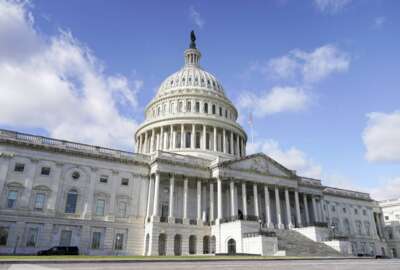The appropriately named Burns, Oregon has become a flashpoint for the latest episode in an old American tradition: People taking a stand against the federal government for what they consider injustice.
This sort of thing goes back to the Founding Fathers, when farmers took up protest against the federally-imposed tax on distilled spirits. The dispute went on for years, the tax largely uncollected. It was a serious and, in certain instances, deadly challenge to the sovereignty of the new government.
President George Washington managed to end the Whiskey Rebellion with a combination of negotiation and dispatch of a large militia. He knew the government’s authority had to stand. But he also worried about its legitimacy in the eyes of the people — two different things.
In Burns, after they lit what they considered legal and conservation-inspired fires on federal land, Dwight Hammond and his son Steven ended up serving time, 3 months and 1 year, respectively. Then a judge ordered them back to jail, saying their sentences had been too light under existing law.
Before reporting, they decided to make a stand and statement by occupying the Malheur National Wildlife Refuge. Their occupation of a federal structure in a wildlife refuge has attracted like-minded individuals.
These include the family of Nevada rancher Ammon Bundy, famous for his beef with the government over cattle grazing on federal land. The AP reports, though, the Hammonds don’t welcome that support because they were planning to report peacefully to prison today. Yet the Bundys and other self-described militia people say they’re going to occupy the building indefinitely.
Two occupiers of the same federal spot, each having a different dispute with the federal government. In 2014, a tense clash between the Bundy clan and federal law enforcement did not result in shooting but rather in a sort of sullen standoff that continues a two-decade spat.
Law enforcement in this century is acting with restraint learned in part from incidents in the 1990s. Recall the Branch Davidian complex in Waco, Texas in 1993. The standoff escalated into battle. Four Bureau of Alcohol, Tobacco and Firearms agents were killed. Dozens of occupants of the religious group died in the conflagration that consumed the compound.
The episode remains controversial nearly a quarter century later. It sparked a special counsel investigation that largely — if not totally — exonerated federal agencies and law enforcement personnel. Nevertheless, it caused a revision in thinking about when and how much force is proper in sieges and standoffs.
This all came on the heels of another deadly standoff in 1992, the Ruby Ridge affair involving FBI, ATF and the U.S. Marshals Service versus cabin-dwelling Randy Weaver and his family. The aftermath brought lawsuits against the government, reprimands and indictments of officers, hearings, reports and even a statement by then FBI Director Louis Freeh that law enforcement over-reacted.
As repeated accounts of municipal police incidents have shown in the past year, what a difficult situation for law enforcement: How to minimize violence and potential deaths while doing its duty to enforce the law and the sovereignty of the courts. And facing often unpredictable characters.
I don’t envy people who have to make those decisions, and I urge restraint in judging them — especially in the age of ubiquitous video. Cellphone cam accounts often don’t record the prequels to the shocking scenes they do cover. More fundamentally, while law enforcement may face situations with common elements — a mixture of civil disobedience, odd ideologies and weapons — the specific people involved differ widely. Sometimes they just want to be left alone. Then again, this group in Oregon vows to shoot against anyone who tries to remove them.
What would you do as an officer standing outside?
Copyright
© 2024 Federal News Network. All rights reserved. This website is not intended for users located within the European Economic Area.






